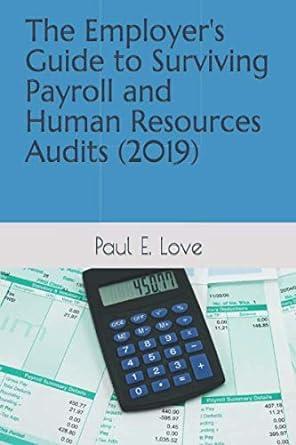Question
10. Financial plan For Microsoft corporation. Start-up costs Funding {Enter text} Break-even date: {enter date here} Profit and loss forecast (Estimate in a separate Excel
10. Financial plan For Microsoft corporation.
Start-up costs
Funding
{Enter text}
Break-even date: {enter date here}
Profit and loss forecast (Estimate in a separate Excel Document and submit)
| 2020 | 2021 | 2022 | |
| Estimated sales | ${Enter} | ${Enter} | ${Enter} |
| Estimated costs | ${Enter} | ${Enter} | ${Enter} |
| Estimated profit/loss | ${Enter} | ${Enter} | ${Enter} |
Cash flow estimates (Estimate in a separate Excel Document and submit)
{Enter text}
These are the Instructions;
Financial plan
I will demonstrate estimation techniques in class. These should be done using financials and will be an exhibit in Excel.
Start-up costs
Summarise the start-up costs of your business. Account for as much detail as possible. The more accuracy and honesty you provide at this stage the better, because if you sugar-coat the costs you face now, youll just be setting yourself up for problems later on. You need to pause and spend time digging down into the figures to give you a realistic costs basis to build your break-even analysis on.
Funding
Detail your sources of funding here. Its up to you how much detail you go into, but if youll be showing this business plan to potential investors, they will want to see how much youre backing your business with your own investment and who else has already invested in the business.
Break-even date
Carry out a break-even analysis and enter the resulting date in the space provided. A break-even analysis estimates when your business could break even and start to pay its ongoing costs. To find a break-even date, you need to a) estimate the sales volume you need to reach to break even and b) estimate how long it will take you to reach that milestone given your capacity limitations.
- Estimate your break-even sales volume:
- Separate all your costs into type, fixed or variable.
- Tally up your total fixed costs.
- Tally up the average variable cost per product sold or service delivered (your variable cost per unit).
- Subtract your variable cost per unit from the unit sales price to find your profit margin.
- Divide your total fixed cost by your profit margin to find your break-even sales volume.
- Estimate your businesss average production or service capacity per day (or week if thats more relevant). Make sure you dig down into the details to account for the entire supply chain from production to point of sale. Once you have an accurate estimate, divide the break-even sales volume by your average production capacity to give you the number of days (or weeks) ahead until you reach your break-even date.
If you charge an hourly rate for a service, you can take a short cut to the break-even calculation by calculating your break-even point in hours. Divide your fixed costs by your hourly call-out rate to find the number of hours that need to be worked to reach break-even, and apply the result to the average number of hours worked each day by the service technicians in your business.
Profit and loss forecast
Present a summary of your profit and loss forecast for the next year in this segment before attaching a detailed forecast to your plan.
Forecasting profit and loss can be quite difficult for existing businesses, let alone start-ups with no track record to go on. If youre still in the start-up phase, you need to base your figures on your market research by estimating the value of the market and the share of it you could take from your competitors as your business develops.
Try finding industry data or using publically available statistics to support your forecasts. You can also provide pessimistic, realistic and optimistic forecasts to rather than just one to promote your objectivity.
Cash flow forecast
Estimate and summarise your cash flow forecasts for the five years, before attaching a detailed forecast (In Excel) for the next year to your business plan.
Few businesses enjoy consistent levels of cash flow throughout the year, so unless your industry or business model can justify that prediction, youll need to drill down into your market research to identify the peaks and troughs in income that you can expect.
Balance sheet forecast
Summarise your balance sheet forecast for the next three to five years, before attaching a detailed forecast for the next year to your plan. Balance sheets account for all the assets a business owns for the calculation of its net worth, which is the value of the businesss assets minus its debts (or liabilities). They also show how the assets are financed if theyre not owned outright by a business or individual.
Potential investors will compare your cash flow forecasts with your balance sheet forecasts to see when the businesss income is likely to balance out all the debts incurred buying assets in the start-up phase. This is different from a break-even analysis, which estimates when the business will generate enough income to cover its ongoing costs rather than its total debts.
Step by Step Solution
There are 3 Steps involved in it
Step: 1

Get Instant Access to Expert-Tailored Solutions
See step-by-step solutions with expert insights and AI powered tools for academic success
Step: 2

Step: 3

Ace Your Homework with AI
Get the answers you need in no time with our AI-driven, step-by-step assistance
Get Started


